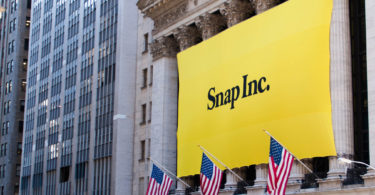Can this $2 stock generate Nvidia sized gains?
Sponsored
Nvidia may hold a monopoly in the AI chip industry… But there's another company with a chip monopoly that has nothing to do with AI… And believe it or not… This little known company could generate Nvidia sized gains for those who get in early. Do you see this chip right here?
It might not look like much… But that chip is set to revolutionize a $7 Trillion industry in the next few years. According to Bill Gates… “This is as revolutionary as the personal computer, the Internet, and the mobile phone.” And there's one tiny company who holds the patents to this groundbreaking innovation… >>Click here to get all of the details.
If you’ve talked to anyone invested in bitcoin lately, there’s a good chance you’ve heard about the halving. Some crypto enthusiasts intone the halving like a religious event with near mystical importance: They believe its mechanics are crucial to bitcoin’s continuing price surge. However, detractors claim that the halving is closer to a marketing gimmick.
The halving is expected to take place on April 19 or 20, depending on the current rate at which bitcoins are created. So, what is it, exactly? And is it hard-coded genius, or smoke and mirrors?
What is the bitcoin halving?
The halving goes all the way back to bitcoin’s origin story, born in the ashes of the 2008 financial crash. The cryptocurrency’s creator—who went by Satoshi Nakamoto, but whose real identity remains unknown—invented bitcoin the following year, and dreamed of creating an international currency that would operate outside the control of governments or central banks. Crucially, Satoshi wrote that there would only ever be 21 million bitcoin, so as to temper its inflation and potentially make each bitcoin more valuable over time.
Whereas the Federal Reserve, in contrast, can adjust the supply of dollars when they deem necessary, bitcoins would be released at a predetermined and ever-slowing pace. Satoshi determined that roughly every four years, the reward to create new bitcoins would be cut in half, in events known as “halvings.” As it became harder to create new bitcoins, each one would become rarer and more valuable, the theory went. Eventually, new bitcoin would stop being created entirely (that will likely not happen for at least another century).
What has happened during past bitcoin halvings?
The halving is designed to make bitcoin more scarce, and ostensibly to push bitcoin’s price upward. And for the last three halvings, that’s exactly what has happened. After bitcoin’s first halving in November 2012, bitcoin’s price rose from $12.35 to $127 five months later. After the second halving in 2016, bitcoin’s price doubled to $1,280 within eight months. And between the third halving in May 2020 and March 2021, bitcoin’s price rose from $8,700 to $60,000.
But correlation does not imply causation, especially with such a small sample size. First, it’s possible that the timing of these rises was purely coincidental. It’s also possible that bitcoin’s rise has less to do with the actual mechanics of the halvings as opposed to the halvings’ narratives. With each halving, excitement grows about bitcoin’s potential, leading more people to buy in. That increase in demand causes the price to increase, which causes even more interest in a self-reinforcing cycle.
What will happen to bitcoin during this halving?
The halving will likely not cause a significant movement in price on the day it happens. Part of the economic impact of the halving has likely already occurred, with investors buying bitcoin in anticipation of the event, and the aftershocks of the halving will continue for months or years afterward, experts say.
“Given the previous history, the day-of tends to be a non-event for the price,” says Matthew Sigel, head of digital assets research at the global investment manager VanEck.
Another factor that makes it difficult to predict where bitcoin is headed post-halving is that this time, the economic circumstances surrounding it are different. It's the first time that bitcoin has peaked before a halving, as opposed to after—last month, bitcoin rallied to an all-time high of $70,000 before dropping back down. That rally was aided by the rise of bitcoin ETFs: investment vehicles that allow mainstream institutional investors to bet on bitcoin’s price without having to actually buy bitcoin itself.
But there are some pessimists who believe that bitcoin’s big run has already happened, thanks to the ETFs—and that its price will actually decrease after the halving. A big reason for this, they believe, will be the actions of traders embarking on the strategy of “selling the news,” who cash in on their holdings in order to capitalize on a potential gold rush of interested buyers. JP Morgan predicted in February that bitcoin’s price will drop back down to $42,000 after “Bitcoin-halving-induced euphoria subsides.”
“Have we already created the buzz for bitcoin prior to halving—or is the ETF what allows Bitcoin to make similar run ups that we've seen in previous halvings?” says Adam Sullivan, the CEO of the bitcoin mining company Core Scientific. “We don't have to answer that question yet.”
While many bitcoin optimists swear that its price will dramatically increase in the months following the halving, it’s important to remember that bitcoin does not always behave rationally, especially during chaotic global news events. After Iran launched a missile attack on Israel on April 13, for example, rattling the global economy, bitcoin’s price plummeted 7% in less than an hour.
What will happen to bitcoin miners during the halving?
While determining the halving's impact on average bitcoin investors is challenging, it seems certain that the halving will dramatically change the bitcoin mining industry. Bitcoin “miners” are essentially the network’s watchdogs, who safeguard the network from attacks, create new bitcoins, and get rewarded financially for doing so. After the halving, miners’ rewards for processing new transactions will be reduced from 6.25 bitcoin to 3.125 (about $200,000)—a significant immediate reduction of revenue.
As a result, mining will become unprofitable for many smaller operations. As they fold or sell themselves to bigger operations, like Marathon Digital Holdings Inc. or CleanSpark Inc., the industry will likely consolidate. “People are going to operate in a marginally profitable environment for as long as they possibly can,” Sullivan says. “Those are folks that will probably look to get scooped up, probably in the six-to-12 month timeframe.”
But the bitcoin mining companies that weather the storm and gain market share from those who have bowed out could reap enormous rewards, Matthew Sigel says. “Miners are always the cockroaches of the energy markets; they're very nimble,” he says. “We think the second half of the year will be very strong for bitcoin miners, as long as the bitcoin price rallies.”
5 Stocks That Will Crush AI in 2024
Sponsored
Hello. I'm James Altucher. I've been called a “genius investor” by my fans… And an “eccentric millionaire” by some others. I think it's because I make big predictions… That tend to come true. Today, I'm making my boldest prediction ever. Next-generation AI technology will create the first $100 TRILLION industry. And there could be trillions available to those investors who get in early. I put together this personal video [HERE]… Revealing the AI stocks I believe… Could turn as little as $10,000… Into $1 MILLION over the next few years. If you get in early, this one-time opportunity could… Potentially change your financial circumstances… For you, your family, and your heirs. Today, I want to show you how I believe… AI 2.0 will open a brief “wealth window”… That will slam shut any day now. If you've missed out on new tech opportunities before…. I urge you, do not ignore this message. >>HERE is everything you need now<<
P.S. To show you I'm serious about helping you get in on this opportunity, I'm giving away one of my top 5 AI 2.0 stock picks – free. See my top 5 picks here.









